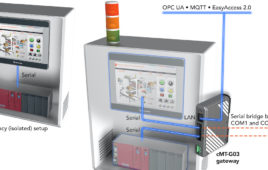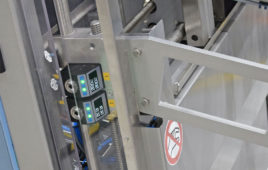A team of chemists from New York University and the University of Cambridge has developed a method for examining the inner workings of battery-like devices called supercapacitors, which can be charged up extremely quickly and can deliver high electrical power. Their technique, based on magnetic resonance imaging (MRI), establishes a means for monitoring and potentially enhancing the performance of such devices.
The work, which appears in the latest issue of the journal Nature Communications, focuses on electric double-layer capacitors (EDLCs), a type of so-called supercapacitor. These are excellent options for powering systems where fast charging and power delivery are crucial, such as in regenerative braking (for use in trains and buses), camera flashes, and in backup computer memory.
“The MRI method really allows us to look inside a functioning electrical storage device and locate molecular events that are responsible for its functioning,” explains Alexej Jerschow, a professor in NYU’s Department of Chemistry and one of the paper’s senior authors.
“The approach allows us to explore electrolyte concentration gradients and the movement of ions within the electrode and electrolyte, both ultimately a cause of poor rate performance in batteries and supercapacitors,” adds co-author Clare Grey, a professor in the Department of Chemistry at the University of Cambridge.
The other authors included Andrew Ilott, a post-doctoral researcher in NYU’s Department of Chemistry, and Nicole Trease, a post-doctoral researcher at Stony Brook University.
Capacitors are designed to store electric charge, but their storage capabilities are limited. In recent years, advances have been made to address this shortcoming. Among these has been the creation of supercapacitors, which can store more electrical charge than their predecessors. This is due to an electrical double layer formed at the electrolyte-electrode interface—the process by which energy is stored—which serves to more effectively trap energy than can standard capacitors.
However, the exact nature of this charge process in supercapacitors remains a subject of debate. Previous research has attempted to understand this process through the synthesis of new electrode materials, simulations of the charging process, and by spectroscopy—rather than by direct imaging of a complete functioning device.
In the Nature Communications work, Jerschow, Grey, and their co-authors explored a novel approach to understanding how these devices function: the use of MRI technology, which serves as a looking glass into supercapacitors’ energy storage activity.
This method has a precedent from the same research team. In work published by Nature Materials in 2012, the NYU-Cambridge team developed a method, based on MRI, to look inside a battery without damaging it. Their technique provided a method for helping to improve battery performance and safety by serving as a diagnostic of its internal workings.
In the supercapacitor work, the researchers found that MRI could pinpoint the location and estimate the amount of both positively and negatively charged electrolyte ions—data that are crucial to understanding the energy storage mechanism.
The technique has the potential to analyze functioning devices at different states of charge, and thus to provide information on the microscopic processes which are ultimately responsible for the storage and power capacity of a device.
With this non-invasive method, the researchers say, one could rapidly test the properties of different capacitor materials and thus elucidate their effectiveness in enhancing device performance. They add that techniques could also be useful in assessing factors that affect the longevity of the devices, or the conditioning or “breaking-in” of devices during first use.
The team next plans to investigate how different ions interact with other molecules in the electrolyte mixture, which may be a key to enhanced performance.
Filed Under: Capacitors, M2M (machine to machine)




